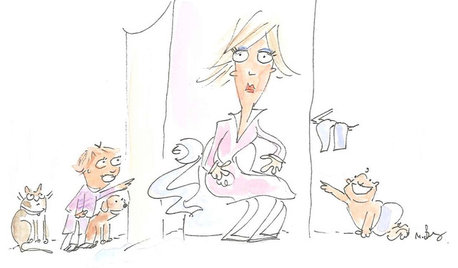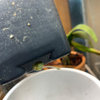Heard this on TV and people have done it
carla17
18 years ago
Related Stories

HOUSEKEEPINGCan-Do Cleaning Strategies for Busy People
While you dream of having a maid (to go with the cook and chauffer), this simplified cleaning routine can keep your real-world home tidy
Full Story
LIFE21 Things Only People Living With Kids Will Understand
Strange smells, crowded beds, ruined furniture — here’s what cohabiting with little monsters really feels like
Full Story
COLORHave You Heard the Hues? 15 Colors You May Not Know About
Name-drop these shades at holiday parties — or better, try one on your walls — and expand your palette possibilities
Full Story
MEDIA ROOMSGet It Done: Organize the Media Cabinet
Ditch the worn-out VHS tapes, save valuable storage space and find hidden gems with this quick weekend spruce-up
Full Story
HOUZZ TOURSHouzz Tour: From Burned Down to Done Up in Las Vegas
A fire gutted this midcentury home — and laid the groundwork for a beautiful new floor plan
Full Story
DECORATING GUIDESBean There, Done That: Coffee Table Alternatives
Get creative with these ideas for salvaged and DIY pieces that will get people talking
Full Story
EXTERIORS8 Homes With Exterior Paint Colors Done Right
Get ideas for an exterior palette from these homes that run the gamut from Mediterranean to modern
Full Story
FUN HOUZZ10 Things People Really Don’t Want in Their Homes
No love lost over fluorescent lights? No shocker there. But some of these other hated items may surprise you
Full Story
GREAT HOME PROJECTSPower to the People: Outlets Right Where You Want Them
No more crawling and craning. With outlets in furniture, drawers and cabinets, access to power has never been easier
Full Story
DECORATING GUIDES12 Home Furnishings for People on the Move
Even if you're not staying put in your current home, you can give it style and a sense of permanence with these pieces
Full Story






celsiana_rose
Micimacko
Related Professionals
Quincy Landscape Architects & Landscape Designers · Finneytown Landscape Architects & Landscape Designers · Buford Landscape Contractors · Chelmsford Landscape Contractors · Dedham Landscape Contractors · Fort Myers Landscape Contractors · Lancaster Landscape Contractors · Lewisville Landscape Contractors · North Haven Landscape Contractors · Red Oak Landscape Contractors · Riverview Landscape Contractors · Shoreview Landscape Contractors · Cincinnati Roofing & Gutters · Thousand Oaks Roofing & Gutters · West University Place Roofing & Guttershenry_kuska
georgia_rose
elks